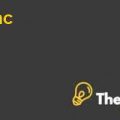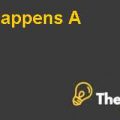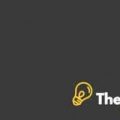
Case Analysis: Classic Fixture and Hardware Company Case Solution
The CFO of the company made the following assumptions to forecast next year’s financial statements. Moreover, the assumptions are as follows
| a. Assumes a 2 month collection period |
| b. Assumes a 1 month payment period on purchases |
| c. The interest rate on short-term bank debt is 5% |
| d. Estimated taxes of $7,167,250 are paid in March, June, September, and December, based on forecasted year 2008 income taxes |
| e. The interest rate on long-term debt is 7.5% |
Moreover, the assumptions are consistent since, the company’s sales are highly seasonal and therefore, the company was facing many difficulties in meeting their day to day financial needs. However, the assumptions were made in a way by assuming that the company would not be able to materialize the sales as expected or project in 2008. Therefore, the forecasting was made by trying to keep the analysis simple and precise.
Furthermore, the company was assuming that the projections will not be achieved easily. Therefore, the CFO of the company decided to take a loan from the local bank. Since the company was private limited company with low exposure to the capital markets, hence the only option to fulfill the needs of the working capital was to take bank loan.
Finally, it can be seen that the company was ready for outstanding expenditures and lack of proper working capital management. Due to this, the assumptions were made on realistic basis. However, the performance of the company was still below the projected criteria, but the difference was not significant. Therefore, it can be said that the company was prepared for the next year.
Watkins’ Believe for the inability to pay $37 million loan
The company is highly dependent upon the loan to support its sales operations and to finance its working capital needs. The value of the loan increased to 37 million at the end of the July 31, 2008. This was due to over estimation of sales, as forecasted sales in July are high as compared to the actual sales. Watkins, the CFO of the comany believes that the company would be unable to pay off debt, because liquidity ratio of the company is high due to increase in the value of inventory and receivables. The firm tied up its balance in current assets greatly, which could affect the firm capability to pay off its debt.
Financial Crisis: Permanent or Temporary
The company is working effectively but not efficiently since, the sales of the company are highly seasonal and due to this, the firm has to take loans in the production seasons to fulfill its working capital needs. This indicates that the company is not managing its working capital and liquidity efficiently.
Moreover, when the company takes loan on the season to fulfill the production needs of the orders and to work in a flow, the firm has to pay an interest over its borrowing, which will ultimately result in an overall higher production cost.
Furthermore, the company is working on a lower debt as compared to its equity in both the years, while the policy of the company restricts it to pay off the debt in the last month of the season. This is good to some extent. On the other hand, this policy should be changed; since, the company gives away the whole profitability or a major portion of it to pay off the debt after the season and waits the next year to avail it when the season starts.
In addition, Matocha do not have to worry about the loan since, the company is capable enough to pay the loan if not at the end of this year, but next year the company will be able to pay this loan as indicated by the financial statements and financial strength of the company...............
This is just a sample partial case solution. Please place the order on the website to order your own originally done case solution.













